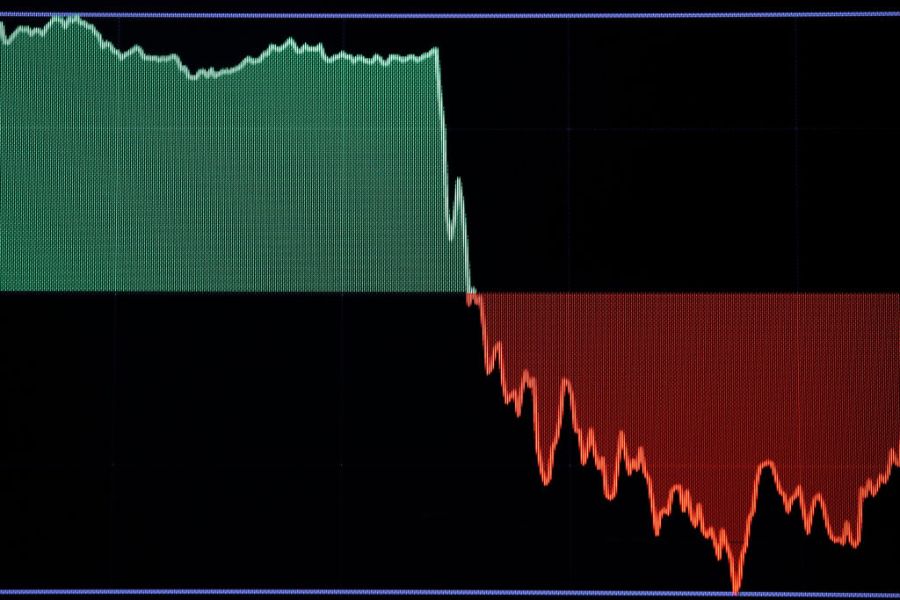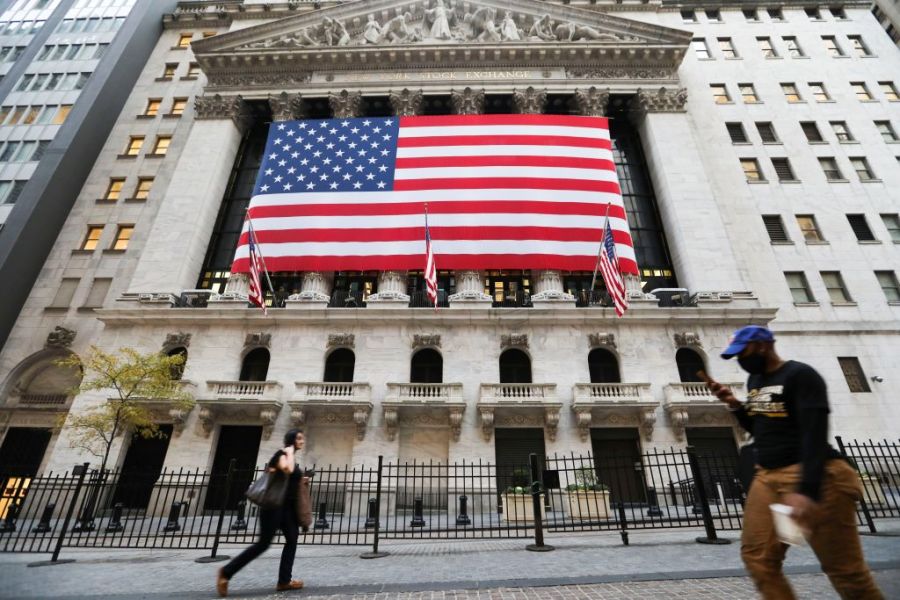
The Dow Jones & Company, one of the largest business and financial news companies, was formed by Charles Dow, Edward Jones, and Charles Bergstresser (who was a silent partner). The Dow Jones was responsible for creating the Dow Jones Industrial Average (DJIA), one of the most popular and widely acknowledged stock market indices.
Who Were Charles Dow and Edward Jones?

Charles Henry Dow was an American journalist born on November 6, 1851, in Connecticut. He moved to New York in his late twenties where he took up financial news reporting as a career.
Edward Davis Jones was born on October 7, 1856. He was a statistician and journalist based in the United States. Edward dropped out during his junior year and took up journalism. In 1882, he met Charles Dow while working for Providence. Dow and Jones later on formed Dow & Jone Company, which published financial reports, and it was from these reports that Dow formed the Wall Street Journal.
When Did the Dow Jones Debut?

More often than not, people confuse the Dow Jones and the Dow Jones Industrial Average (DJIA). It is important to note that the Dow Jones & Company is responsible for forming and establishing the DJIA, which debuted on May 26, 1896. For people looking to invest in stocks, the DJIA is one of the most-watched stock indexes.
The DJIA currently comprises the prices of 30 of the most publicly-traded companies on the New York Stock Exchange (NYSE) and the Nasdaq. In simpler terms, the DJIA is a guide that investors use to determine the stock market’s direction before investing. When Dow Jones initially launched the DJIA, it comprised 12 leading companies drawn from the industrial sector, which included:
- American Sugar
- US Rubber
- Laclede Gas
- Chicago Gas
- National Lead
- American Tobacco
- US Leather Pfd
- North American
- General Electric
- American Cotton Oil
- Tennessee Coal & Iron
- Distilling & Cattle Feeding
These companies were taken as a representation of the significant sectors of the United States economy. During this era, the average was 40.94 points. As the years progressed, the DJIA grew to include more companies in other sectors such as health, technology, and retail, bringing the total to 30 companies, which include:
- Visa (V)
- IBM (IBM)
- 3M (MMM)
- Boeing (BA)
- Intel (INTC)
- NIKE (NKE)
- Verizon (VZ)
- Chevron (CVX)
- Amgen (AMGN)
- Walmart (WMT)
- Dow Inc. (DOW)
- Caterpillar (CAT)
- Salesforce (CRM)
- Microsoft (MSFT)
- Honeywell (HON)
- Apple Inc. (AAPL)
- McDonald’s (MCD)
- Merck & Co. (MRK)
- Goldman Sachs (GS)
- Cisco Systems (CSCO)
- The Home Depot (HD)
- Procter & Gamble (PG)
- JPMorgan Chase (JPM)
- American Express (AXP)
- Johnson & Johnson (JNJ)
- UnitedHealth Group (UNH)
- The Coca-Cola Company (KO)
- The Travelers Companies (TRV)
- The Walt Disney Company (DIS)
- Walgreens Boots Alliance (WBA)
In most cases, the performance of these industrial companies is likened to the overall performance of the economy. This is why the DJIA is used as an indicator of the general well-being of the U.S economy.
How Does the DJIA Work

As mentioned earlier, Dow Jones & Company established the DJIA to measure the progress and movement of the leading blue-chip companies in the U.S. The DJIA index uses the price-weighted index, which means that stocks with a higher share price carry a greater weight in the index compared to stocks with a low share price.
When it first launched, Dow Jones calculated the average by adding up the stock price of the 12 companies and then divided the sum by 12, as is the norm when one is finding the mean in simple arithmetic. However, as time progressed, the index calculation changed to reflect the relative importance of each company based on what percentage of the index’s total value it represents.
Currently, the DJIA index calculation is done by adding together the prices of the 30 stocks in the index and then divided by a special divisor known as the Dow divisor. The Dow divisor counteracts the effects of stock splits, paid out dividends by each component, and corporate spinoffs.
The Dow divisor ensures that the index is consistent, prevents it from being distorted by one-off events, and ensures that the DJIA is only affected by changes in the stock prices.
Changes Made to the DJIA

As the Greek philosopher, Heraclitus said, “Change is the only constant in life.” As such, the DJIA has changed over the years. Initially, the DJIA started with 12 companies, and in 1916, the Dow was adjusted to include more companies, thereby bringing the number up to 20 companies. By 1928, the number of stocks had risen to 30 companies, which is today’s rule. In 1932, DJIA dropped eight stocks from the index. New companies such as Coca-Cola and Procter & Gamble replaced the former eight.
In November 1972, the DJIA crossed the 1,000 mark, and by March 29, 1999, it reached the 10,000 mark. Since its inception, the DJIA included stocks listed on the New York Stock Exchange (NYSE), but in 1999, it widened its scope to include companies such as Microsoft and Intel, which are listed on Nasdaq.
From the different changes that the DJIA has gone through over the past 126 years, we can conclude that the index components are not permanent since companies either shut down or merged. The only way for a company to remain in the index is to record substantial growth and attract more investor interest.
Notable Events That Affected the DJIA

Besides the changes in the composition of the DJIA, external factors have also brought out changes in the DJIA. For example, during the Stock Market Crash of 1929, the DJIA fell by 23% for two days. Later on, in 1987, the Dow posted its worst daily percentage loss when it closed at 22.6%. This one-day crash is commonly referred to as Black Monday.
After the September 11 terror attack in the U.S., the stock markets reopened, and the Dow posted its third-worst daily point loss, sinking by 7.13%. Therefore, it would be safe to say that the Dow Jones has stood the test of time and has weathered harsh economic storms for the past 126 years. We hope that we have debunked all the questions you had about the Dow Jones and its history from this post.





